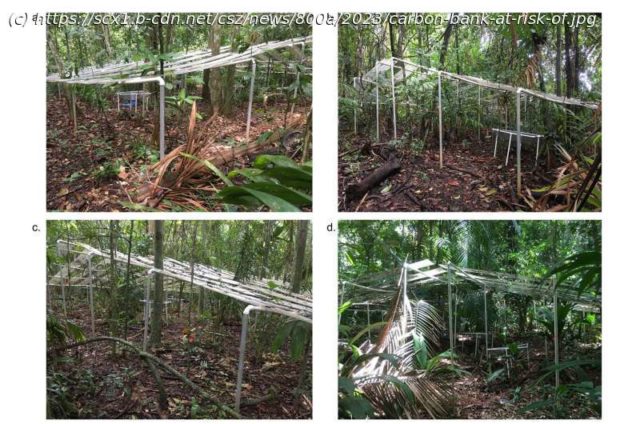Tropical rainforests store 25%-40% of global soil carbon, though they occupy only 7% of Earth’s land area. By functioning as a carbon sink, tropical forests prevent more severe effects from climate change.
Tropical rainforests store 25%-40% of global soil carbon, though they occupy only 7% of Earth’s land area. By functioning as a carbon sink, tropical forests prevent more severe effects from climate change.
A research team led by a Colorado State University scientist found that climate change will impact tropical forests’ ability to store carbon. Their study reveals that persistent drying in tropical forests, an anticipated result of climate change, leads to carbon loss from the most fertile soils—and that soil nutrients play an important role in how much carbon is released and when.
« Tropical forests can be really sensitive to reductions in rainfall, » said Daniela Cusack, lead author and an associate professor in the Department of Ecosystem Science and Sustainability, « and they have some of the largest stores of carbon on Earth. As climate is drying, that carbon is vulnerable. »
Climate change is reducing rainfall in some places and causing more year-to-year variation. Some tropical forests already have been documented as drying.
« All of that carbon that’s stored in rainforests right now is like a bank, » Cusack said. « We’re banking all that carbon and anything that releases that carbon is going to exacerbate climate change and impact everybody. »
Cusack and her team assessed the effects of natural seasonal drying and chronic reduced rainfall on carbon fluxes in tropical forests. They found that natural seasonal drying suppressed the release of carbon dioxide.
« There was some resilience at first, which makes sense because these are seasonal forests, so they’re used to a dry season, » Cusack said. « But it seems like after that initial resilience, we’re hitting a threshold where things are shifting more rapidly in some tropical forests. »
The ecosystem model they used in the study predicted that persistent drying would increase the release of carbon dioxide from more fertile and wetter tropical forests but decrease CO2 fluxes from drier tropical forests.






![Bartłomiej Sienkiewicz w "Graffiti" [OGLĄDAJ]](http://nhub.news/wp-content/uploads/2024/06/thumbcf7f4a607db3922a512eb9e3bad01f7f-100x75.jpeg)